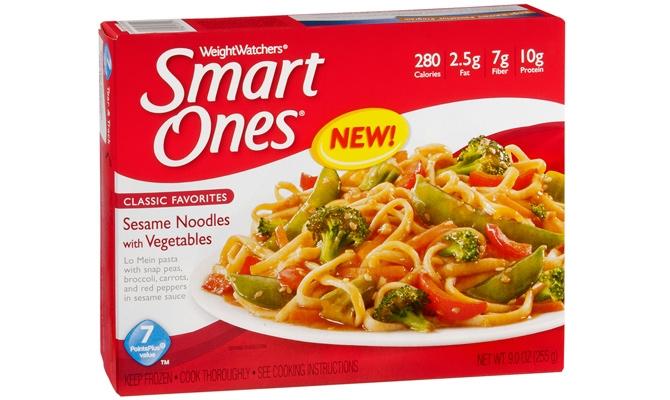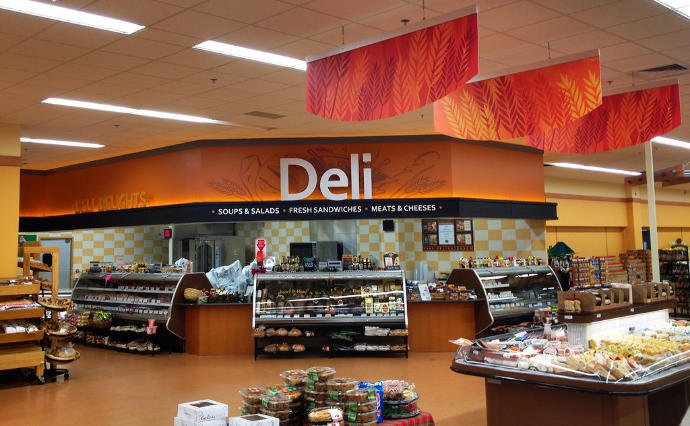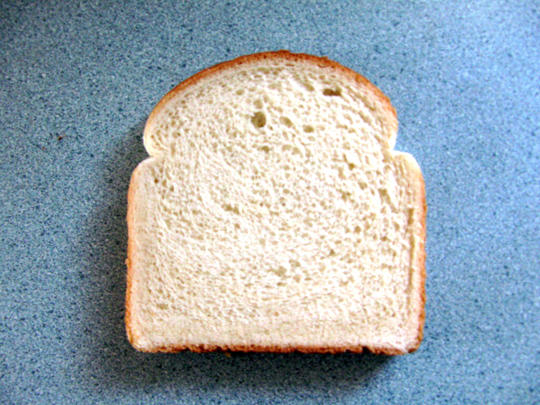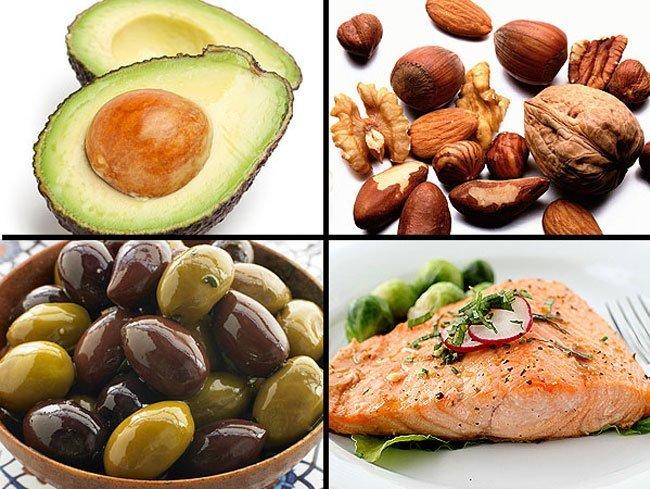
1. Stop Going To Fast Food Restaurants
You can't find anything healthy and fresh in a fast food restaurant. The foods are made to look good and taste good at the expense of health. The restaurant environment may not be totally hygienic. And the price of the meals may be too expensive. Pizza restaurants usually have items on the menu that are priced at $10 or up. Hamburger restaurants usually have full meal items (hamburger, fries, and soda) that are priced between $5-10. You can order things on the cheaper Dollar Menu, but one item may not be filling, and the high salt content likely is going to make you very thirsty afterwards.

2. Stop Buying Ready-Made Meals at Supermarkets and Grocery Stores
Ready-made meals at supermarkets and grocery stores are not healthy, because they usually contain a lot of artificial ingredients and are not fresh. Deli sandwiches may be priced anywhere from $5 to $10, more or less. You may be better off with buying a bundle of cucumbers, tomatoes, and spinach, and making your own home-made salad for lunch for a couple of days, whereas the sandwich can only last you one day, let alone two.

3. Stop Buying Processed Foods In General
I'm talking about the highly processed, refined, energy-dense type of processed food. These processed foods usually have little nutritional value in them, but they do have a lot of calories and/or artificial ingredients. You shouldn't even allow them cross your mind.
Sometimes, you want to buy bread to add more calories in your otherwise calorie-deficient diet of fruits and vegetables. In that case, buying enriched white bread, which is usually cheaper than whole wheat bread due to lower grade quality, is okay. Enriched white bread is made from refined flour, so it has a longer shelf life and is more digestable, so that means you can give yourself smaller rations per day than the amount you would eat for whole-wheat bread. Enriched white bread contains nutrients that are later added/enriched into the flour. Although you do not get many nutrients from the bread alone, you can get a lot of nutrients from eating raw fruits and vegetables that complement the bread slices. Buying a sack of rice can last you for months, and rice has a long shelf life. Baked potatoes are very starchy, so they can be a form of staple food. Staple food is merely food that comprises most of your daily calories and helps you fight off hunger and starvation.

4. The Fresh Produce Section Is Your Best Friend
Fresh fruits and vegetables are at the center of hearty, healthy eating. You should eat a variety of fresh fruits and vegetables, getting all the colors of the rainbow. They provide water, dietary fiber, sugars, proteins, lipids (avocados, tofu, tempeh, legumes), vitamins, and minerals. Eat fruits and vegetables raw and cooked to maximize the nutritional benefits. If you have never been a picky eater, then eating fruits and vegetables will be a breeze for you. However, if you are the type who picks out the "nasty-tasting" vegetables or fruits, then you may build up tolerance by allowing yourself to familiarize with the flavor or texture one bite at a time.

5. Look For Good Deals In The Brochure Provided At The Entrance Or In The Mail Box
If you have a relative or friend who is accustomed to finding cheap, healthy shopping deals, then you may learn from that relative or friend. However, if you are living by yourself and no one really has taught you this life skill, then you may learn this important life skill the hard way. You should pick up the brochure that is provided at the front entrance of the grocery store or supermarket, and you should look inside your mailbox for advertisements from the said grocery store or supermarket. You should remember the average prices for most of the fresh produce at the supermarket or grocery store, so that you will know whether a good deal is being advertised on the brochure or ad.

6. Compare Prices From Different Grocery Stores or Supermarkets
You should have a collection of grocery stores and supermarkets to turn to. Different stores will promote different products at different times of the year. To take advantage of this fact, you should keep a mental note of the average prices of the products at all the stores. It's like playing The Price Is Right in real life. That way, when you do your grocery shopping once or twice a week after work, you can hit the stores successively on your work-to-home route and get good deals on the food.

7. Acknowledge Personal or Religious Dietary Restrictions
You may have a religion that prohibits you from eating certain food products deemed "unclean" for consumption. You may have strict dietary restrictions due to a metabolic disorder. You may have ethical dietary restrictions on certain food products derived from cruel/inhumane sources. And you may simply have no palate for certain food products (i.e. no sweets for you if you don't have a sweet tooth). Those dietary restrictions are most important and will shape your personal shopping preferences.

8. Fat Is Not Bad
Animal fat from fatty meats can be used as cooking oil and flavoring. Animal fat can also be used to fatten the meal. Soy products, like tofu and tempeh, when stir-fried, will contain higher fat composition, increasing the amount of calories in the dish. So, if you are short on your calories, then you may add some meat and tofu to the otherwise all-vegetable stir-fry.
The following is a study about stir-frying fermented soybean (tempeh). Minerals decrease, and fat composition increases. But then, if you get your minerals from vegetables and you need more calories, then adding tofu and tempeh into the stir-fry is the way to go.
Setiawan, Budhi, et al. "The Influence Of Traditional Stir-Frying With Oil On Acceptability, Antioxidant Activities, Nutrients, And The Phytic Acid Content Of Fermented Soybean (Tempeh)." Nutrition & Food Science 46.2 (2016): 259-271. Academic Search Premier. Web. 9 Aug. 2016.

9. Minimize Food Wastage
Food wastage can be minimized in the food preparation and consumption process. In the food preparation process, you may use all the edible parts of the fruit or vegetable. After eating watermelon bowls for dessert one evening, you may scrape out the remaining pink flesh and peel off the outer skin. What you are left with is the watermelon rind, and you may stir-fry the watermelon rind to make a vegetable dish. For a whole chicken or turkey, you may find offal meat stuffed in the body cavity. Instead of discarding the offal, you may cook the offal in soups. When eating a baked chicken drumstick, you may pull all the meat off with your teeth and nibble on the bone like a dog, squeezing the bone marrow juices out.

10. Just Drink Water
Buying soda pop from a vending machine costs anywhere from $1.00 to $2.00. Walmart may have a soda can priced at $0.50 at its vending machine. Soda pop has no nutritional value, has too much sugar, may contain caffeine (which acts like a diuretic), is gassy and acidic, and costs about a dollar for a can. A healthier and more economic option would be drinking water. Obtaining drinking water is easy. You just need to fill up a kettle with municipal tap water, put it on the stove, and turn off the stove when the kettle is whistling. At the time when the water is still boiling hot, you may slide in a tea bag and make tea without any added sugars or artificial sweeteners. But you still have to buy tea, making water the best option for you. Water is available at many public places, so you can always fill up with a mouthful of free clean water anywhere you go.

11. Eat Weeds
Weeds, such as dandelions or green nira or green scallions, are extremely easy to grow. You may buy green onions at the grocery store one day and consume all but the root part. If you keep the root and put the root in a shallow container filled with water, then the green onion will grow, and you will have more green onions to eat and spice up your cooking. Green nira, originated in Asia, is an extremely aggressive invasive species in North America. You may plant some in an old shoe filled with dirt. A handful of green nira can make a vegetable dish. Dandelion greens may be purchased at the grocery store, or you may forage for them at the local park (especially if the local park looks big enough and the grass looks sort of untreated/unmaintained) in the wee hours of the morning. The yellow flowers of dandelions can be used to make tea. The green, luscious leaves can be used to make a vegetable dish. If the leaves are not so bright and green, then they would taste extremely bitter.

 Holidays
Holidays  Girl's Behavior
Girl's Behavior  Guy's Behavior
Guy's Behavior  Flirting
Flirting  Dating
Dating  Relationships
Relationships  Fashion & Beauty
Fashion & Beauty  Health & Fitness
Health & Fitness  Marriage & Weddings
Marriage & Weddings  Shopping & Gifts
Shopping & Gifts  Technology & Internet
Technology & Internet  Break Up & Divorce
Break Up & Divorce  Education & Career
Education & Career  Entertainment & Arts
Entertainment & Arts  Family & Friends
Family & Friends  Food & Beverage
Food & Beverage  Hobbies & Leisure
Hobbies & Leisure  Other
Other  Religion & Spirituality
Religion & Spirituality  Society & Politics
Society & Politics  Sports
Sports  Travel
Travel  Trending & News
Trending & News
Most Helpful Opinions